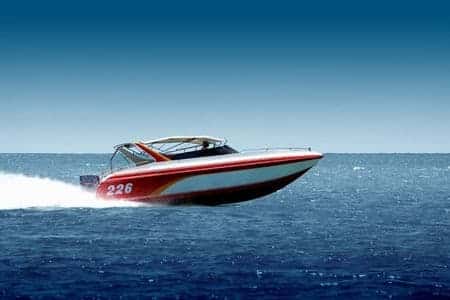Boating Accident Allegedly Caused by Drunk Driver
Updated on
This case involves a significant accident by a boat operator under the influence of alcohol. On the day in question, the plaintiff, a thirty-three-year-old male, was on his sailboat on a large lake. He had extensive experience sailing, having owned and operated a sailing vessel since he was eighteen. The defendant, a twenty-five-year-old female, was driving a jet boat, with three of her friends on board. Subsequent forensic toxicology reports indicated that drinking had occurred on the vessel prior to the accident. The toxicologist stated that the defendant was operating under the influence. The defendant was aware of the plaintiff’s vessel, but felt she had ample room to navigate around it. Instead, she crashed into it, and shattered the boat in half. The plaintiff sustained serious injuries including a fractured spine, a concussion, and multiple lacerations on his head, neck, and arms. There was a question as to the speed of the jet boat at the time of the accident.
Question(s) For Expert Witness
1. How can the speed of the boat be determined?
Expert Witness Response
 Boating accidents present a number of challenges in determining relative speeds of the vessels. For starters, in serious boating accidents, all parts may not be available. This makes simulating and analyzing the collision somewhat more difficult. To combat this, when constructing the model, I usually examine "working" models of both vessels to fill in any parts that cannot be found. Usually, by analyzing the remaining parts of the boats, and comparing them with the "working" versions, the missing parts can be estimated accurately. Boating accident reconstruction has a specific number of challenges including the weather conditions (and impact on the surface waves), any wear on the boats, the occupants, the angle at which they hit, and the actual spot on the body of water. Beyond that, the actual vessels in the accident factor into the analysis. Sail boats come in a number of different variations, and the hull configuration, the number of sails, different materials used, and keel type have to be discovered. For the jet boat, the analysis involves the hull shape, the propulsion system (which is usually enclosed in the hull), the usage, and any added features (a mount or extended swimming platform, for example). Then, once this information is added, and the external factors can be considered, a combination of the modeling software and external calculations can be made to provide an accurate assessment of the speed of both vehicles at the time of the accident. I have over twenty-four years of experience in aquatic and boat engineering, including fifteen years in accident reconstruction.
Boating accidents present a number of challenges in determining relative speeds of the vessels. For starters, in serious boating accidents, all parts may not be available. This makes simulating and analyzing the collision somewhat more difficult. To combat this, when constructing the model, I usually examine "working" models of both vessels to fill in any parts that cannot be found. Usually, by analyzing the remaining parts of the boats, and comparing them with the "working" versions, the missing parts can be estimated accurately. Boating accident reconstruction has a specific number of challenges including the weather conditions (and impact on the surface waves), any wear on the boats, the occupants, the angle at which they hit, and the actual spot on the body of water. Beyond that, the actual vessels in the accident factor into the analysis. Sail boats come in a number of different variations, and the hull configuration, the number of sails, different materials used, and keel type have to be discovered. For the jet boat, the analysis involves the hull shape, the propulsion system (which is usually enclosed in the hull), the usage, and any added features (a mount or extended swimming platform, for example). Then, once this information is added, and the external factors can be considered, a combination of the modeling software and external calculations can be made to provide an accurate assessment of the speed of both vehicles at the time of the accident. I have over twenty-four years of experience in aquatic and boat engineering, including fifteen years in accident reconstruction.
About the author
Stephen Gomez, J.D.
Stephen Gomez, J.D., is the General Counsel and Corporate Secretary at Lumos Labs, where he oversees legal and compliance matters in areas like privacy, intellectual property, and litigation. He has extensive legal experience in the e-commerce, media, and entertainment industries, previously holding key roles at Thirstie, Equinox Media, and SeatGeek. Gomez also contributed to legal functions at HelloFresh and Chubb and has a background in legal content and research management. He earned his J.D. from Boston University School of Law and a B.A. in Politics from New York University. His expertise lies in providing strategic legal advice to fast-growing companies.
Subscribe to our newsletter
Join our newsletter to stay up to date on legal news, insights and product updates from Expert Institute.
Sign up nowFind an expert witness near you
What State is your case in?
Subscribe to our newsletter
Join our newsletter to stay up to date on legal news, insights and product updates from Expert Institute.



